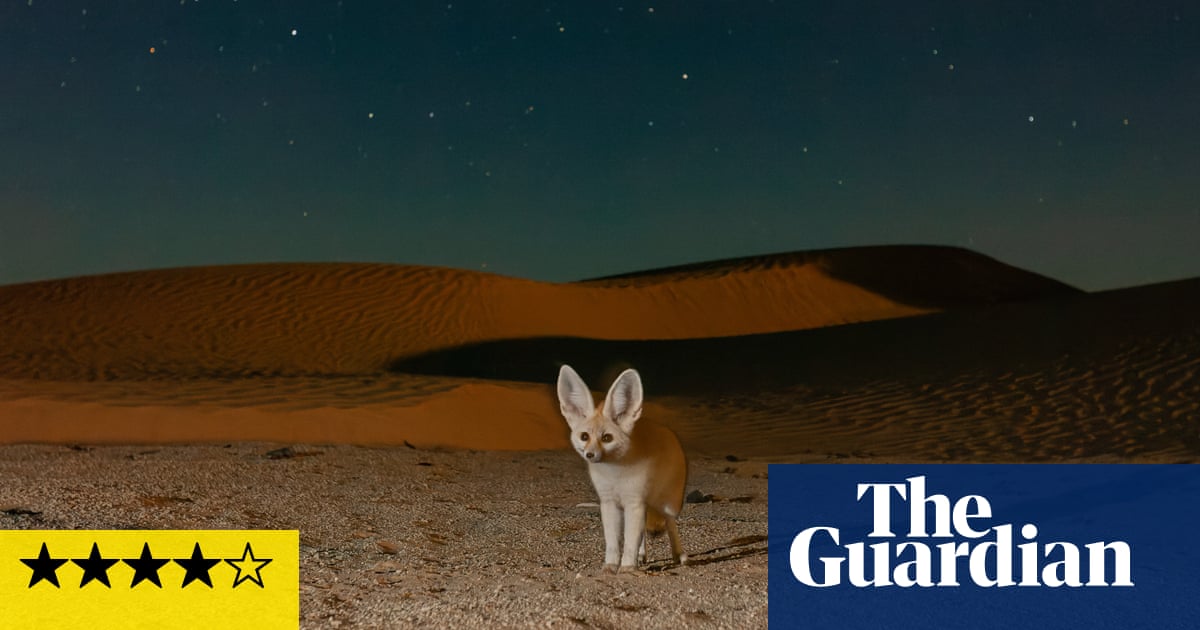Mammals review â David Attenborough delivers one of wildlife The following are some of the ways to get in touch with each other:Vâs greatest pleasures | Television
[ad_1]
TThe Etruscan shrew, a tiny furry time machine, is tiny and furry. Earthâs smallest mammal weighs less than a ping-pong ball and finds food by feeling for it at night, mimicking the very first mammals 200m years ago. They lived in darkness, for one simple reason – dinosaurs were active during the daylight hours.
Two-thirds of mammals are still nocturnal now, so Mammals â the latest David Attenborough nature extravaganza â begins with an episode dedicated to lives lived in the dark. The Etruscan Shrew is joined by coyotes, mole rats and a host other animals, all hunting in the dark, and most of them require the latest filmmaking technology to see.
The first episode’s night-vision aesthetics help to dispel or at least delay any obvious criticisms you may have of the series. Natural history programmes are always trying to portray themselves as having a specific goal or theme. However, despite starting out as shrewd underdogs, today mammals dominate the Earth. This study feels like it is a very general premise. It could lead to a show thatâs just some cool stuff about animals generally.
Mammals begins with a bang in Zambia. (The sound of Attenborough introducing a new segment by simply intoning a placename is, incidentally, one of wildlife tellyâs abiding pleasures. âZambia.â Say it to yourself now in your best Sir David whisper. âZambia.â Lovely.) A leopard, armed with its tapetum lucidum â reflective tissue behind its retinas so it can see superbly in the dim light of a crescent moon â has a go at chasing some impala, before homing in instead on baboons sleeping in a tree.
The baboons canât see, but they can hear, so as soon as the leopard snaps a twig, the screeching primates are on the run. We hold our breathe as a mother with her baby is stranded by a branch. Will it take the leopardâs weight? Blood dripping and coursing from a branch is shown when the big cat bites an unlucky baby baboon. This was done in inverted monochrome, as it would be in a normal colour sequence. But blood is, if anything, creepier in night vision, as is the sight of paw marks on one of the impalasâ hind quarters.
The tragic story of a single cape buffalo trapped in the Ngorongoro Crater in Tanzania is equally harrowing. It can fight off one spotted hyena. It can fight 10 spotted hyena. Then 20, 30, and 40 of them appear, glowing a eerie light gray through the night lens. The buffalo is slowly ripped into pieces.
Mammals manages to film in color in low-light conditions at least half of the time. The greatest technical achievement in the hour happens in the Sahara, where the fennec fox â rarely seen, because if humans come anywhere near, it disappears between the dunes â is captured crisply on night-time adventures that, thanks to supersensitive cameras, look as if theyâve been floodlit. Its enormously cute ears enable it to listen out for the beetles and lizards it likes to snack on â and to pick up the distant call of a potential mate.
Learning that itâs still possible to make new friends, even when one is the size of a guinea pig and wandering across endless sands in the small hours, is a comfort. In Argentina, a large armadillo was also having a memorable night, chasing and then fornicating a female inside an abandoned farm building. The image of it on its stubby legs, sniffing appreciatively after picking up the thick smell of a large lady armadillo is the best of the episode. It beats out some strong competitors.
The show is careful to search for batty wonders like the greater Bulldog bats that live along the coast of Trinidad. Again, the night-vision filming lends the section set inside their cave a disturbing, alien quality, as if the creaturesâ moist wing membranes and flappy jowls werenât repellent enough. Out at sea, though, weâre back to conventional filming by moonlight for the deeply impressive sight of the bats catching fish they cannot see: just a fin above the water is enough for them to use echolocation to guess where it is going. The rest is done with a swoop and a scrape of the surface using hooked claws. Mammals are a diverse group, but so far they have been unerringly hunting for marvels.
After newsletter promotion
[ad_2]



